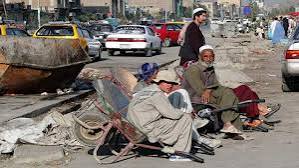Afghanistan’s economic problems
Afghanistan is facing many economic problems that have a wide impact on people’s lives and the country’s development. Some of the most important economic problems of this country are:
- Unemployment and poverty
- High unemployment rate, especially among young people.
- Widespread poverty in urban and rural areas.
-
Dependence on foreign aid
- Strong dependence on international aid for government funding and development.
- The reduction of these aids leads to financial crises.
-
lack of economic diversity
- Afghanistan’s economy is mainly based on agriculture and animal husbandry.
- Lack of development of industrial and service sectors.
- weak infrastructures
- Lack of suitable transportation, energy and communication infrastructures.
- Serious problems in water and electricity supply.
-
Political insecurity and instability
- The negative effects of insecurity and war on the economy.
- Political instability that causes the lack of attracting foreign investment.
-
Trafficking and informal economy
- Widespread existence of drug and goods smuggling.
- A significant part of the country’s economy is informal.
-
corruption
- Widespread corruption in public and private institutions.
- A big obstacle for economic development and investment attraction.
-
Inflation
- Increase in prices and inflation that reduces people’s purchasing power.
- Negative effects on the economic power of households.
-
Lack of access to education and skills
- Low level of education and lack of professional skills in strong textthe workforce.
- An obstacle to economic development and innovation.
- Decreasing agricultural production
- Effects of climate change and drought on agricultural production.
- Non-use of new technologies in agriculture.

Economic problems of Afghans under the Taliban government
After the Taliban took control of Afghanistan in August 2021, the country’s economic problems have increased sharply. These problems have had a wide impact on people’s lives and have created many challenges for the Afghan society. Some of the most important economic problems of Afghans during the Taliban regime are:
- International sanctions and freezing of assets
- Freezing Afghan assets in foreign banks, especially in the United States.
- Cutting off international aid, which provided a major part of the government budget before the Taliban took over.
- Economic sanctions that have limited access to international financial resources.
- Increasing unemployment and poverty
- Closure of many jobs and businesses due to insecurity and unstable economic conditions.
- Increasing the unemployment rate, especially among young people and graduates.
- Widespread poverty that has affected more than half of the country’s population.
-
food shortage and inflation
- Disruption in the food supply chain and decrease in agricultural production.
- The sharp increase in prices and inflation, which has reduced people’s purchasing power.
- Risk of food crisis and malnutrition due to lack and increase in basic food prices.
-
weak banking system
- Restrictions on access to banking services and problems in withdrawing money from banks.
- Reducing trust in the banking system and increasing informal and cash transactions.
- Liquidity problems that have disrupted economic activities.
-
Investment reduction and capital outflow
- Reduction of domestic and foreign investments due to political and security instability.
- Capital withdrawal from the country by individuals and companies due to insecurity and lack of confidence in the economic future.
-
Corruption and lack of transparency
- Continued widespread corruption in public and private institutions.
- Lack of transparency in the management of financial and economic resources.
- Administrative corruption that has reduced economic productivity and destroyed public trust.
-
Lack of health and educational facilities
- Reduced access to healthcare services due to the closure of centers and lack of financial resources.
- Negative impact on the general health and well-being of society.
- Closing schools and reducing access to education, which endangers the future of the young generation.
-
Dependence on humanitarian aid
- Strong dependence on humanitarian aid to meet people’s basic needs.
- Restrictions on the arrival of humanitarian aid due to logistical and security problems.
-
Insecurity and immigration
- Increasing insecurity and terrorist attacks that have a negative impact on the economy.
- Increase in internal and external migration, which reduces the labor force and increases the pressure on economic resources.
Conclusion
The economic problems of Afghans during the Taliban regime are very complex and multidimensional. In order to improve the country’s economic situation, there is a need for immediate and coordinated measures at the domestic and international levels. Improving security, attracting investment, returning international aid and creating an efficient banking system are among the measures that can help improve Afghanistan’s economic conditions.